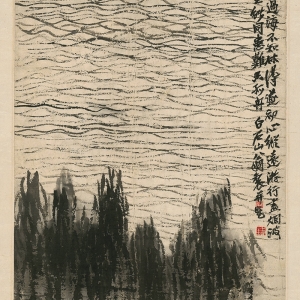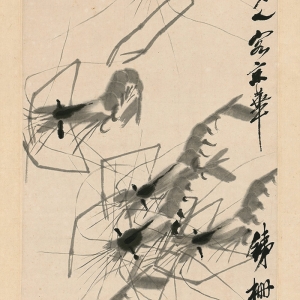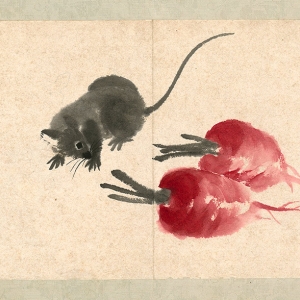Exhibition of Qi Baishi’s Art

Introduction
Exhibition of Qi Baishi’s Art
Qi Baishi (1864-1957), was formerly known as chunzhi, whose courtesy name was Weiqing, and pseudonym Lanting. Later he renamed himself Huang, with pseudonyms of Binsheng and Baishi, aliases of The Old Man in Xingziwu. The owner of Jieshanyin Study and The rich man of lithographic printings, etc. He was born in a poor peasant family in Baishipu Xingziwu, Xiangtan County, Hunan Province. When he was young, he worked as a carpenter. At the age of 20, he began to learn from the Jieziyuan Painting Collection and study painting by himself. After the age of 50, he resolutely carried out the “Artistic reform at his old age” and initiated a new style of freehand flower and bird painting of “safflower ink leaves” , which demonstrates the zeitgeist of Chinese art with a new look. Since then, he became the most famous, creative and influential Chinese painting master in the 20th century. Moreover, his influence has spread all over the world and won international prestige such as “International Peace Prize” and “World Top Ten Cultural Celebrities” successively.
Qi Baishi experienced the three periods in his life: the late Qing Dynasty, the Republic of China and New China. His legendary experience from a carpenter to the master of painting has always been admired by people. With unique talents, diligence, and the longevity, Qi made great success in painting. However, Qi also has a unique quality that he is very confident in his own art. This kind of enterprise and perseverance in born makes him always keep an unpretentious and pure heart, dare to adhere to his artistic personality, and maintain the artist’s freedom, independence and creativity all his life, which turns him into a great artist. Therefore, when Chen Shizeng persuaded him with “Draw my own painting, why should I be like others”, which was just in line with the wishes of Qi, he agreed and accepted it. Thus, the artistic path of “Draw my own painting” across his whole life was established.
Qi was good at poems, writings, paintings and seals, and especially the achievements of painting is the most representative. It not only promoted the development of literati painting, but also disseminated the profound and unpopular Chinese painting art to the public. In the exhibition, nearly 100 pieces of paintings were selected from the collection of Qi Baishi's works, including flowers, birds, landscapes and figures, covering his early, middle and late paintings. It is hoped that the audience can understand the evolution of Qi Baishi’s painting style and immerse into his maverick and charming art world.
















